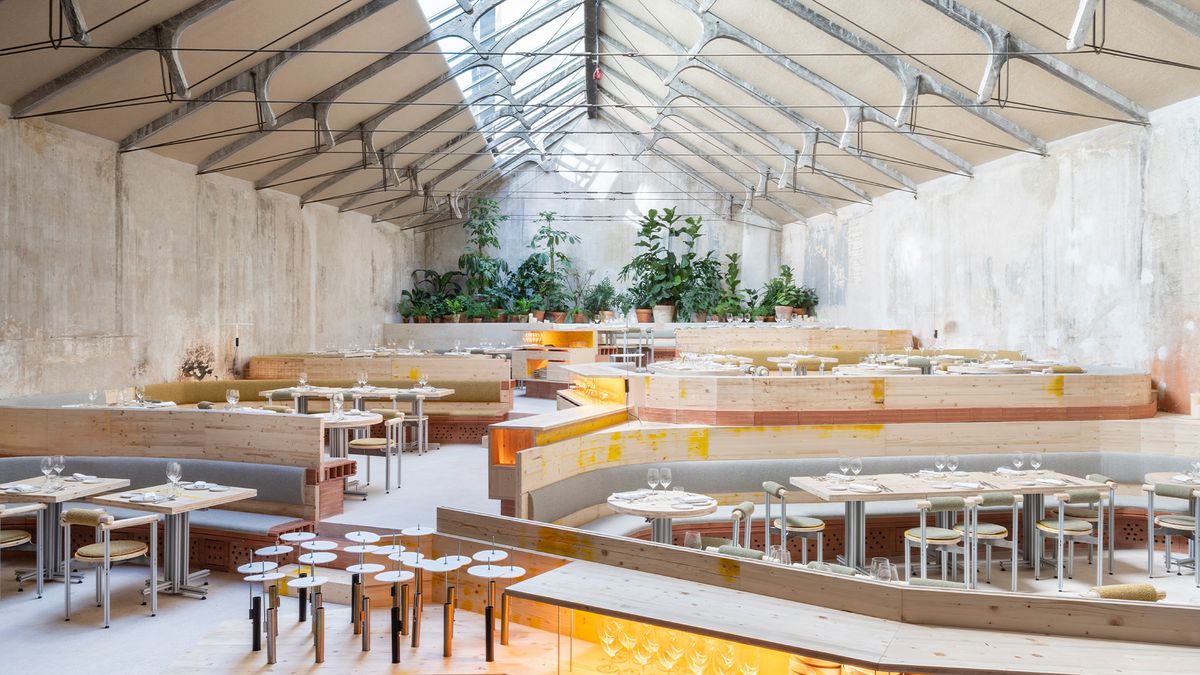Berlinmuren
2008 - Film & Video (Film & Video)
23 min 56
Lars Laumann
Eija Riitta was born in 1954 in Liden, Sweden, and is “objectum-sexual.” Since June 17, 1979, her name is Eija Riitta Berliner Mauer taking the name of her husband, the Berlin Wall. In animism all elements of nature are considered as alive and have souls. “Objectum-sexuality” is an extension of this belief. Eija’s blog explains the situation perfectly – her attraction to rectangular parallel lines, constructions such as bridges, fences or the Berlin Wall. Furthermore, this can be witnessed at her house, now the “Museum of models and guillotines,” a subject that she is equally passionate about. More than a documentary on the subject, Lars Laumann filmed the encounter between two lovers of the Berlin Wall. In the video, we come to realize that the first woman married the wall before the war, clinging to the memory of what it was, while the second fell in love with the Berlin Wall after its destruction. Surprisingly, these women do not consider the wall as a symbol of political history, but more as an independent object of history. The first woman fell love with the wall for its lines, its strength, its breadth, while the other for its colors, its fragmentation, and its fragility. In presenting this film in an artistic context, Laumann makes a surprising parallel between “objectum-sexuality” and art. To contemplate a work for its formal aspects, refers to Eija’s speech which considers the Berlin Wall as a free being, without any responsibility of which he is charged. Thus, the destruction of the wall, as Eija claims, is as an act of barbarism, of an innocent person.
The films of Lars Laumann incorporate codes of documentary, grappling with topics at the limits of fiction. This process of fictional documentary recalls the practices some artists in the Kadist collection like Omer Fast, Joachim Koester, John Menick, Akram Zaatari, Arthur Zmijewski. In 2007, Matthew Higgs presented, at White Columns Gallery (New York), Laumann’s first film, “Morrissey Foretelling the Death of Diana” which claims that the Smiths album “Queen is Dead” produced in 1986, announces the death of Princess Diana in 1997 in Paris. Illustrated in a film montage, the narrator’s discourse draws parallels between the surprising words belonging to pop culture and events that occurred years later. Lars Laumann’s analysis takes as a starting point the iconic figure of Diana, and develops a “conspiracy theory” by claiming extraterrestrial involvement in those events, thus offering a vision of a world entirely controlled. Lars Laumann was born in 1975 in Brønnøysund, Norway. He lives and works in Berlin.
Colors:
Related works sharing similar palette

© » SLASH PARIS
Porter notre part de la nuit — MAC VAL Musée d'art contemporain du Val-de-Marne — Exhibition — Slash Paris Login Newsletter Twitter Facebook Porter notre part de la nuit — MAC VAL Musée d'art contemporain du Val-de-Marne — Exhibition — Slash Paris English Français Home Events Artists Venues Magazine Videos Back Previous Next Porter notre part de la nuit Exhibition Mixed media Thu-Van Tran, Novel Without a Title #2, série Novel Without a Title , 2019 Bronze, patine chimique et rehauts colorés — 20 × 167 × 20 cm Collection MAC VAL — Musée d’art contemporain du Val-de-Marne — Acquis avec la participation du FRAM Île-de-France...

© » KADIST
Matthew Angelo Harrison
2015In Hole #1 a zebra scull stands in as a representation of Africa, while the plexiglass box and the hole made through it represent the inaccessibility of that culture to African-Americans....

© » ARTS EQUATOR
Weekly Southeast Asia Radar: Puja Pantai in Selangor; young Cambodian singers talk old music | ArtsEquator Thinking and Talking about Arts and Culture in Southeast Asia ArtsEquator Radar AP January 16, 2020 ArtsEquator’s Southeast Asia Radar features articles and posts about arts and culture in Southeast Asia, drawn from local and regional websites and publications – aggregated content from outside sources, so we are exposed to a multitude of voices in the region...

© » KADIST
Taiyo Kimura
The wall installation Friction/Where is Lavatory (2005) plays off anxieties about time but utilizes sound to create a disconcerting experience of viewership: comprised of dozens of wall clocks sutured together, the work presents a monstrous vision of time at its most monumental...

© » KADIST
Pierre Leguillon
2008End of 2008, Pierre Leguillon presented at KADIST, Paris the first retrospective of the works of Diane Arbus (1923-1971) organized in France since 1980, bringing together all the images commissioned to the New York photographer by the Anglo-American press in the 1960s...

© » KADIST
Margo Wolowiec
2017Imagine How Many by Margo Wolowiec is a woven polyester depiction of blurred text and floral images found on social media, distorted beyond complete recognition...

© » KADIST
Exhibition walk-through of Here We Live with Pheng Cheah, leading theorist of cosmopolitanism, Jerome Reyes, artist, and Marie Martraire, director, KADIST San Francisco Presenting videos and installations, alongside archival materials, the exhibition Here We Live , reveals strategies through which communities cope with the cultural tensions linked to the transformations of the places they live...

© » SLASH PARIS
Guy Leclercq — Épures et couleurs — Dutko / Quai Voltaire Gallery — Exhibition — Slash Paris Login Newsletter Twitter Facebook Guy Leclercq — Épures et couleurs — Dutko / Quai Voltaire Gallery — Exhibition — Slash Paris English Français Home Events Artists Venues Magazine Videos Back Guy Leclercq — Épures et couleurs Exhibition Painting View of the artist’s studio Guy Leclercq Épures et couleurs Ends in 27 days: December 7, 2023 → January 13, 2024 Dutko Gallery is pleased to present from December 7th until January 13th a selection of the most recent works by Belgian artist Guy Leclercq...

© » LE MONDE
« On ne démocratise pas le rapport à la musique, à la danse en les réduisant à un “éveil musical ou dansant” » Offrir Le Monde F in octobre tombait une nouvelle pour le moins sidérante : le directeur académique des services de l’éducation nationale en Indre-et-Loire annonçait le démantèlement des classes à horaires aménagés musique et danse ( CHAM et CHAD ), de la 6 e à la 3 e , du lycée Paul-Louis-Courier, de Tours, au nom de la mixité sociale et scolaire...











